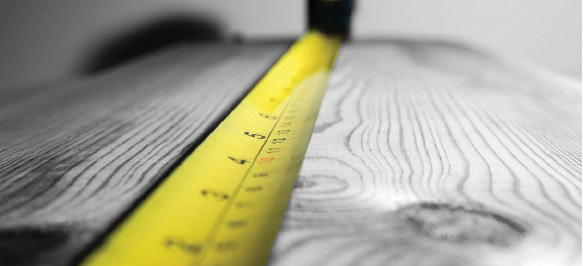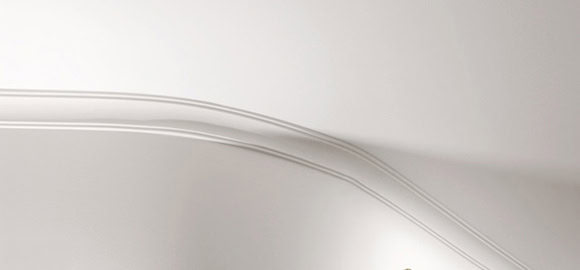How to Measure
Interior Coving & Cornice, Railing, Skirting Boards & Architrave and Exterior Cornice, Window Frames, Cills, Stringer Courses & Pediments:
- Accurately measure the length of the surface area where you’ll be installing the mouldings.
- Add 5% to 10% to this total to allow for wastage. Be particularly careful to do this on products where there is a minimum quantity as being 1m short on installation and having to re-order 10m or more of product is particularly frustrating.
- For flexible mouldings, a minimum radius is given for each product. This is the tightest curve that each moulding can accommodate – a moulding should not be forced to bend more tightly than it’s minimum as it will distort the profile and possibly damage the product. Full details are given on each product page but, if you need help, please do call us.
Door Surround Kits:
- Measure the height and width of the area you are going to cover. Each product is made up of separate components and the dimensions of these are given on the door surrounds page. Remember that if a header or pediment is being used the width of this will need to allow for the width of the vertical sections of the surround as well as for the width of your door opening. Additional components can generally be added if taller or wider sizes are required, and components can be cut down to size if smaller sizes are needed.
Faux Panels/Panel Mouldings:
- Measure the perimetre of the shapes you are creating, and order accordingly. We often advise that the best way to do this is to actually draw the shapes you are creating onto your wall in pencil. This allows you to not only measure more accurately, but also to achieve the best result with the space you have and give an accurate brief to your installer.
- Allow an extra 5% to 10% for wastage.
Ceiling Roses:
- These are supplied only in the sizes shown.
- Generally, the larger the room, the larger the ceiling rose, but the primary indicator of size, traditionally at least, was the size of the chandelier that would be hanging from it…
- If being used with a chandelier the rose should not generally be bigger than the chandelier – two thirds to full width is a good rule of thumb.
Interior Pediments:
- All pediments are supplied to the sizes shown and most cannot be altered. Pediments 8 and 9 however can be reduced in width or increased by butting two or more together.
Raised Panels, Brackets and Other Wall Panelling options:
- These are all supplied to the dimensions shown only, so please ensure that you measure the spaces in which they are to be used to be sure that they will fit. Further details are given on each product page, but if you need assistance please do call us – we’re here to help.
Beams & Joists:
- A Main Beam generally represents what would have been the main structural beam. This would have crossed the narrower width of the room, so measure this and order accordingly.
- Some Main Beams are available in various widths, so you order the appropriate size and cut down on site. Others have joint covers that can be used of you need to join more than one beam together to achieve your room width.
- If your room is longer than around 5m long, and you want to achieve a realistic look, you would generally need a second Main Beam. This is because joists were limited in their length for structural reasons.
- Smaller beams and / or joists can then run off your Main Beam at right angles (although many people prefer to leave their configurations without them, which is perfectly acceptable as joists were frequently covered by plasterwork).
- If you are using joists, traditionally they would be 5 to 6 feet long (152cm to 182cm), and never longer than 8 feet (244cm). They would be spaced around 16″ (40cm) apart, centre to centre, and never more than 24″ (61cm). This can look congested to the modern eye though, so the choice is yours as to whether you want to create a realistic depiction of an Elizabethan ceiling, or a design with fewer beams and joists.
- As an alternative to joists you can use Intermediate Beams to run off you Main Beam. These can then run to longer lengths than 8 feet and still look realistic.
- We are happy to help with ceiling design. Please call us on 01823 77 44 00.
- If you are covering an RSJ details are given on the Covering An RSJ page, but if you need further assistance please call us.
Wall Planks:
- For interior layouts, decide firstly on whether your configuration will run to full wall height, to picture or plate rail height, or to dado rail height.
- Generally wider planks ‘frame’ less wide planks, and are used for skirting as well.
- Planks are fitted fairly randomly, but a good rule of thumb is about half as 5″, and then a quarter each as 4″ and 3″.
- Wider 6″ & 7″ options can be used as main verticals or horizontals.
- We are happy to help with design. Please call us on 01823 77 44 00.
Columns:
- Firstly measure the height and ensure that the column you want is tall enough. If it is not you can either build your own plinth beneath it, or you will need an alternative column.
- Then decide the diameter, or chunkiness of the column. This may be dictated by the following points on load bearing. Remember though that a 30cm diameter shaft is very chunky – most installations suits shaft diameters of 20cm-25cm much better.
- Very important is to decide whether your column needs to be load bearing or not. Our columns are not load bearing, but they are hollow. This means that if there is a load bearing requirement, you can insert a steel or wooden post inside the column to take the weight, and then wrap the column around that.
- In this case most customers put the steel/post in first and the roof. You cannot then thread a full column into position as the roof is in the way. You will need to order 2 x half columns which you will wrap around your post. These are then glued together and you use exterior caulk to hide the joint and finally paint everything for an invisible joint.
- If the roof is not in position you can thread a full column through your post first and position that and then add the roof.
- You need to ensure that the inside of the column is wide enough to accommodate your post. With each column we quote a ‘minimum inner diameter’. This is the narrowest part of the inside of the column and it must be wider than your post. Remember, the widest part of a square or rectangular post is across the diagonal. If you need help – call us.
Need Some Help?
Whether you are looking for a simple cornice or want to explore your creativity, give us a call.


